Antigua, an island renowned for its stunning coastlines and vibrant culture, is a captivating destination for travelers seeking to explore beyond the typical tourist spots. This Caribbean gem provides an array of day trips from Antigua that allow visitors to immerse themselves in a rich mix of history, nature, and local traditions. With its convenient size and extensive network of roads, Antigua is perfectly suited for day-long excursions that can significantly enhance your vacation experience.
When considering day trips from Antigua, the island’s geography plays a pivotal role in the diversity of options available. Surrounded by the clear blue waters of the Caribbean Sea, it offers numerous opportunities for marine adventures. A popular choice is a boat trip to Barbuda, Antigua’s sister island, known for its secluded pink sand beaches and the Frigate Bird Sanctuary, home to one of the largest colonies of frigate birds in the world. This excursion not only provides a relaxing beach day but also a chance to engage with unique wildlife.
Nature enthusiasts will find that Antigua’s lush landscapes provide the perfect backdrop for eco-tourism. The island’s rainforest canopy tours are exhilarating, offering zip lines and rope bridges for a bird’s-eye view of the tropical flora and fauna. Additionally, hiking in the Fig Tree Drive rainforest allows visitors to discover hidden waterfalls and the diverse ecosystems of the island. These activities not only cater to adventure seekers but also to those looking to quietly appreciate Antigua’s natural beauty.

Antiqua
For a deeper dive into the local way of life, consider exploring the island’s villages and markets. The vibrant public market in St. John’s, the capital city, is a colorful mosaic of fruits, vegetables, spices, and crafts, providing insight into the daily lives of the locals. Taking part in a cooking class to learn how to prepare Antiguan dishes or visiting a rum distillery to taste the local spirits can be enlightening experiences that highlight the flavors and traditions of the island.
Lastly, Antigua’s commitment to preserving its culture is evident in its numerous festivals and events, which can be an exciting addition to any day trip. Depending on the timing of your visit, you might have the opportunity to experience the annual Antigua Carnival; an explosion of color, music, and dance that takes over the streets of St. John’s, celebrating emancipation. These festivals not only offer fun and entertainment but also a chance to participate in a longstanding local tradition.
El Paredon Beach: Surf and Sands
El Paredon Beach, located along the Pacific coast of Guatemala, has quietly become a magnet for those looking to escape the hustle and find tranquility or adventure in equal measure. This location offers an appealing combination of surf, sand, and a relaxed atmosphere in a quintessential sleepy beach town setting.
For surf enthusiasts, El Paredon is particularly enticing due to its consistent surf conditions that cater to both beginners and seasoned surfers. The black volcanic sand and the powerful, rolling waves make it an ideal spot for surfing lessons. Local surf schools provide equipment rentals and professional instruction. Beginners can find themselves standing on a board and riding the waves after just a few lessons, while more experienced surfers can challenge themselves with the stronger currents and larger waves found further from shore.
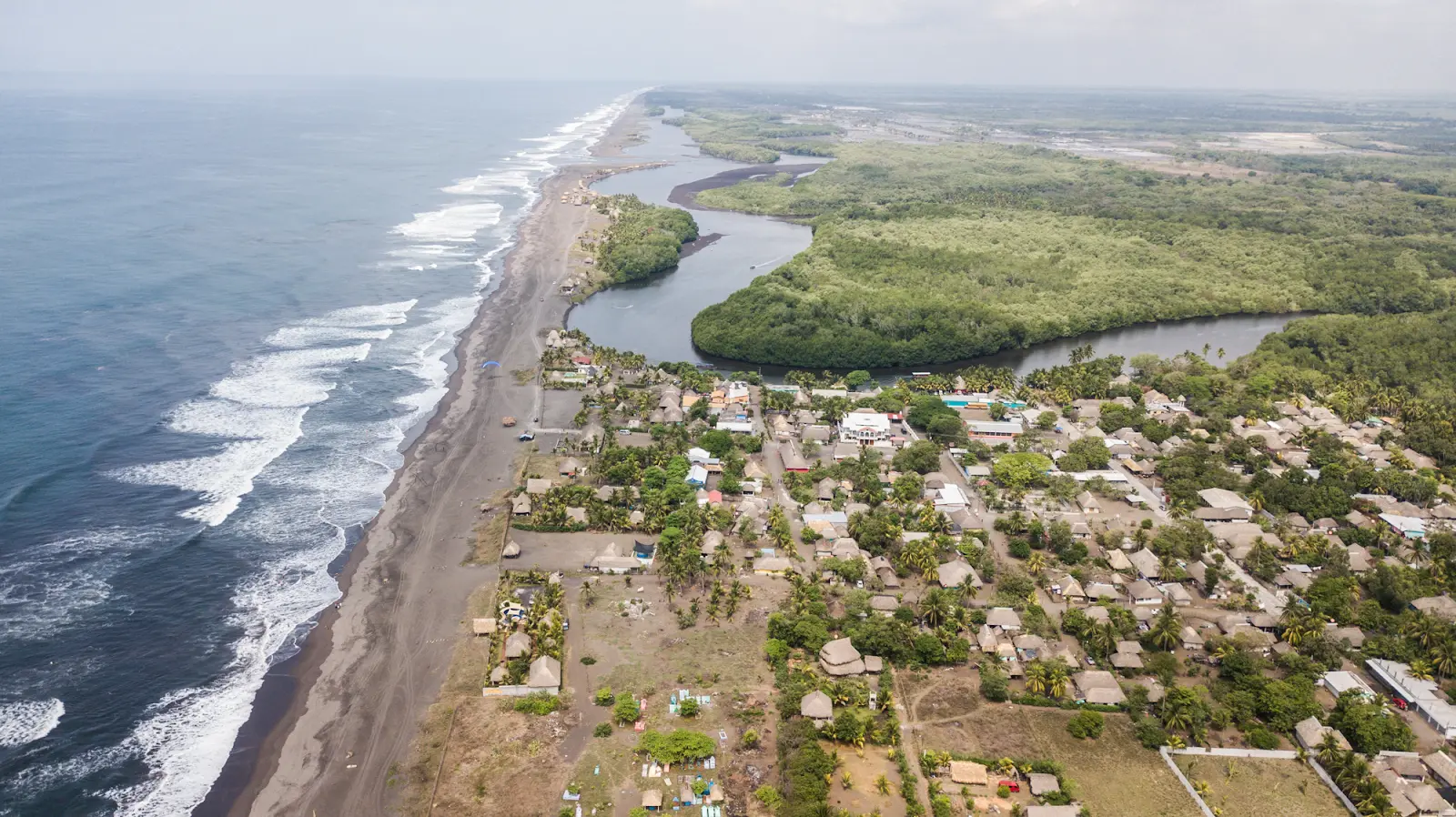
El Paredon
The allure of El Paredon extends beyond the surf. The beachfront here invites relaxation with its expansive, uncrowded stretches where visitors can sunbathe, enjoy leisurely walks, or simply revel in the sound of the waves. The laid-back vibe of the town is palpable, with hammocks frequently spotted swaying under the shade of palm trees, offering a perfect spot for an afternoon nap or a serene place to dive into a good book.
Moreover, El Paredon’s charm is amplified by its community. It remains a sleepy beach town, with a slow pace of life that allows visitors to disconnect and rejuvenate. The locals are friendly and welcoming, often ready to share stories or recommend the best spots for food or fun around town. This sense of community and simplicity is what often captures the hearts of travelers, making them return year after year.
The culinary scene in El Paredon, though modest, is deeply rooted in its coastal setting. Local eateries often serve freshly caught seafood, prepared simply but deliciously, allowing the natural flavors to shine through. Dining by the beach, with the fresh ocean breeze and a view of the sunset, completes the tranquil experience.
El Paredon Beach is more than just a destination; it’s a retreat that offers a blend of relaxation and adventure, making it a cherished spot for both the adrenaline seekers and those in search of peace. Its ability to maintain its character as a sleepy beach town while providing essential amenities and activities makes it a unique and welcoming place for all who visit.
Tikal Ruins: Journey into the Mayan Past
The Tikal Ruins stand as a monumental gateway to the ancient Mayan civilization, offering a unique and immersive experience for any traveler. Located in the lush rainforests of Guatemala, a journey to these ruins is not just a trip but a profound leap back into the depths of history.
A visit to Tikal is often complemented by a guided tour, which is essential to fully appreciate the cultural and historical significance of the site. These tours are meticulously planned to enhance understanding and appreciation of the Mayan past. The guides, often locals with deep knowledge of Mayan history, provide insightful commentary on the intricate architecture, the societal structure, and the astronomical prowess of the Mayans that is reflected in the alignment of their temples and structures.
The experience begins with a round-trip flight that is commonly included in tour packages, offering a hassle-free way to access this somewhat remote location. The flight typically departs from major cities like Guatemala City or Flores, with many travelers opting to start their journey from Antigua due to its own rich history and proximity to the Guatemalan highlands. This accessibility makes Tikal a viable day trip for those based in Antigua, eager to explore more of the country’s ancient heritage after enjoying the colonial charms of the old capital.
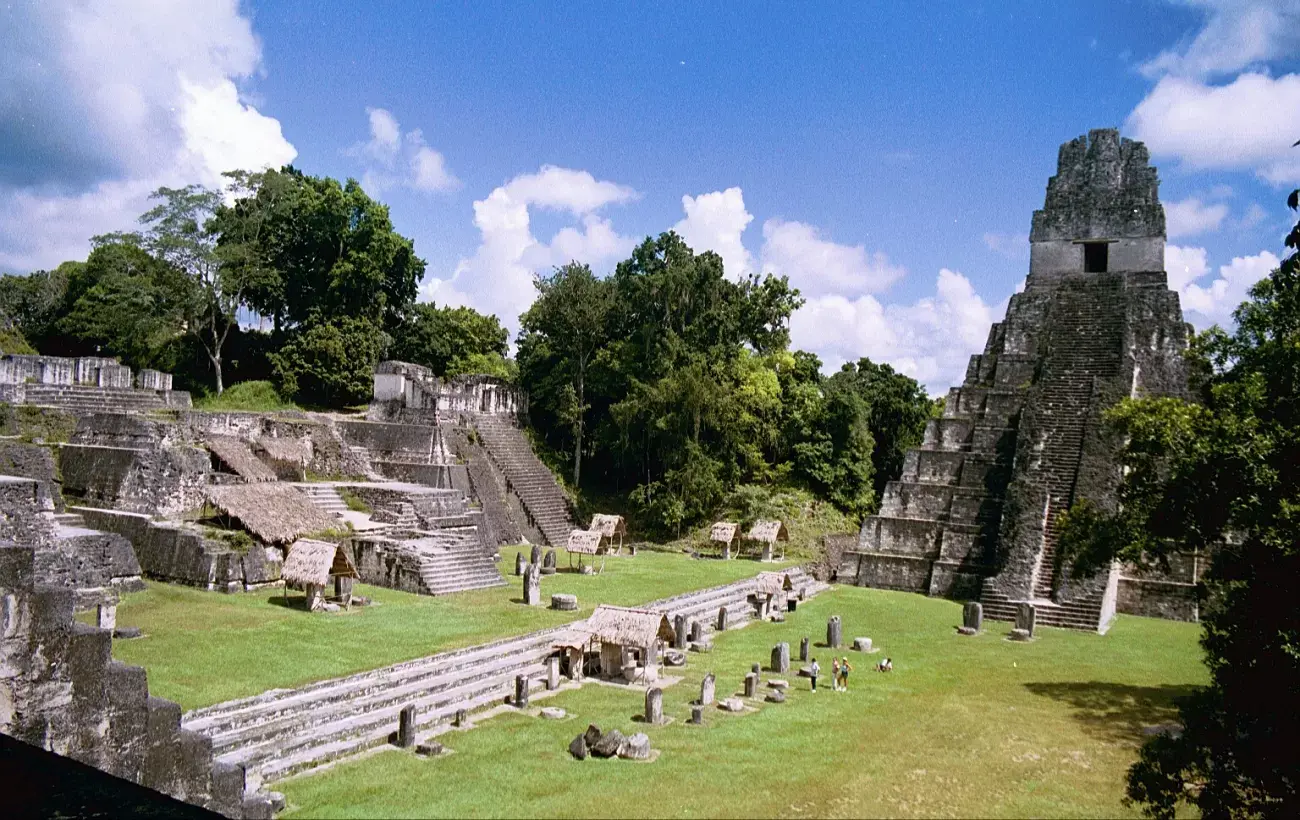
Tikal Ruins
Upon arrival at the site, the grandeur of Tikal unfolds. The ruins are one of the largest archaeological sites of the pre-Columbian Maya civilization. Tikal was once a thriving city, home to tens of thousands of people. Today, it’s a UNESCO World Heritage site, celebrated for its impressive architecture and significant contribution to our understanding of Mayan culture.
The heart of the site is the Great Plaza, surrounded by towering temples and ancient palaces. The most iconic structure is Temple IV, from which visitors can enjoy panoramic views of the endless canopy of the rainforest, punctuated by the tops of other temples peering through the trees. Climbing these ancient steps offers a moment of reflection on the ingenuity and ambition of the Maya.
Walking through the causeways lined with towering ceiba trees, the national tree of Guatemala, one feels a palpable connection to the past. The air is filled with the sounds of the jungle, from the calls of howler monkeys to the rustle of hidden creatures in the underbrush, enhancing the atmospheric journey through time.
Tikal also serves as a prime example of sustainable tourism, where preservation efforts are as much a part of the tour experience as the ruins themselves. Tour guides emphasize the importance of maintaining the integrity of the site, often discussing conservation efforts and the ecological significance of the surrounding rainforest.
The journey back from Tikal to Antigua, although marking the end of the day’s physical travel, often leaves visitors with a lasting sense of awe and a deeper appreciation of the complexities of Mayan history. The experience is not just about seeing the ruins but feeling the pulse of an ancient world that once thrived in the heart of Central America.
Copan, Honduras: A Cross-Border Discovery
Copan, located in the western part of Honduras near the Guatemalan border, is a captivating destination that draws history enthusiasts and adventurers alike. Its most significant attraction, the Copan Ruins, presents a unique opportunity to delve into the ancient Maya civilization. The site is renowned for its intricate stone carvings, towering temple pyramids, and well-preserved hieroglyphics.
The journey to Copan Ruins can often start from nearby hubs like Antigua, Guatemala, where travelers might find convenient day trips that cross the border to explore this historical wonder. These excursions typically provide a seamless travel experience, handling the complexities of cross-border transportation and offering the guidance of knowledgeable local experts who bring the ruins to life.
Upon arrival at Copan, visitors are greeted by the grandeur of the Copan Acropolis, a sprawling complex that stands as a testament to the architectural prowess and societal structure of the Maya. The highlight of the Acropolis is the Hieroglyphic Stairway, the longest known Mayan inscription, which contains over 1,800 individual glyphs. This stairway offers invaluable insights into the history and chronology of the city-state, narrating stories of royal ancestry and divine mythology.

Copan. Honduras
Guided tours of the site often focus on explaining the significance of the various structures, such as the Ball Court, where the Maya played a ritualistic game that had both spiritual and social implications. Nearby, the Altar Q and the stelae portray detailed carvings of Copan’s rulers, providing a chronological record that enhances our understanding of how the city evolved over centuries.
For nature lovers, Copan is not just about ancient stones and tombs. The surrounding valley offers lush landscapes and is home to a diverse range of flora and fauna, some of which can be seen in the site’s adjacent bird park, a sanctuary for macaws and other native birds. These vibrant creatures, particularly the scarlet macaws, are not just beautiful to observe but are also significant to Mayan iconography, often depicted in the ruins themselves.
Copan also serves as a cultural bridge, not only connecting Honduras with Guatemala but also linking the present to the past. The local community around Copan includes descendants of the Maya, and many continue to practice traditional crafts and customs. Visiting Copan, therefore, offers a deeper understanding and appreciation of not just the ancient Maya, but also of the contemporary cultures that have inherited this profound legacy.
Throughout the year, Copan hosts various events and festivals that celebrate both the ancient and modern aspects of local culture. These gatherings are excellent opportunities for visitors to engage with the site in a more dynamic context, experiencing traditional dances, music, and culinary offerings that are as much a part of the region’s heritage as the ruins themselves.
Zunil and Xela: Culture and Hot Springs
Zunil and Xela are captivating destinations in the Guatemalan highlands, each offering a unique blend of cultural richness and natural beauty. These locations, accessible as day trips from Antigua, provide visitors with an authentic glimpse into Guatemala’s indigenous heritage and opportunities for relaxation in natural hot springs.
Zunil, a small town not far from the city of Quetzaltenango, is steeped in cultural traditions, particularly known for its vibrant textiles. The town’s local market is a kaleidoscope of color, where visitors can observe artisans at work on backstrap looms, creating intricate patterns that have been passed down through generations. These textiles are not merely products; they are stories woven from the threads of the Mayan heritage, each pattern and color symbolizing different aspects of daily life and spirituality.
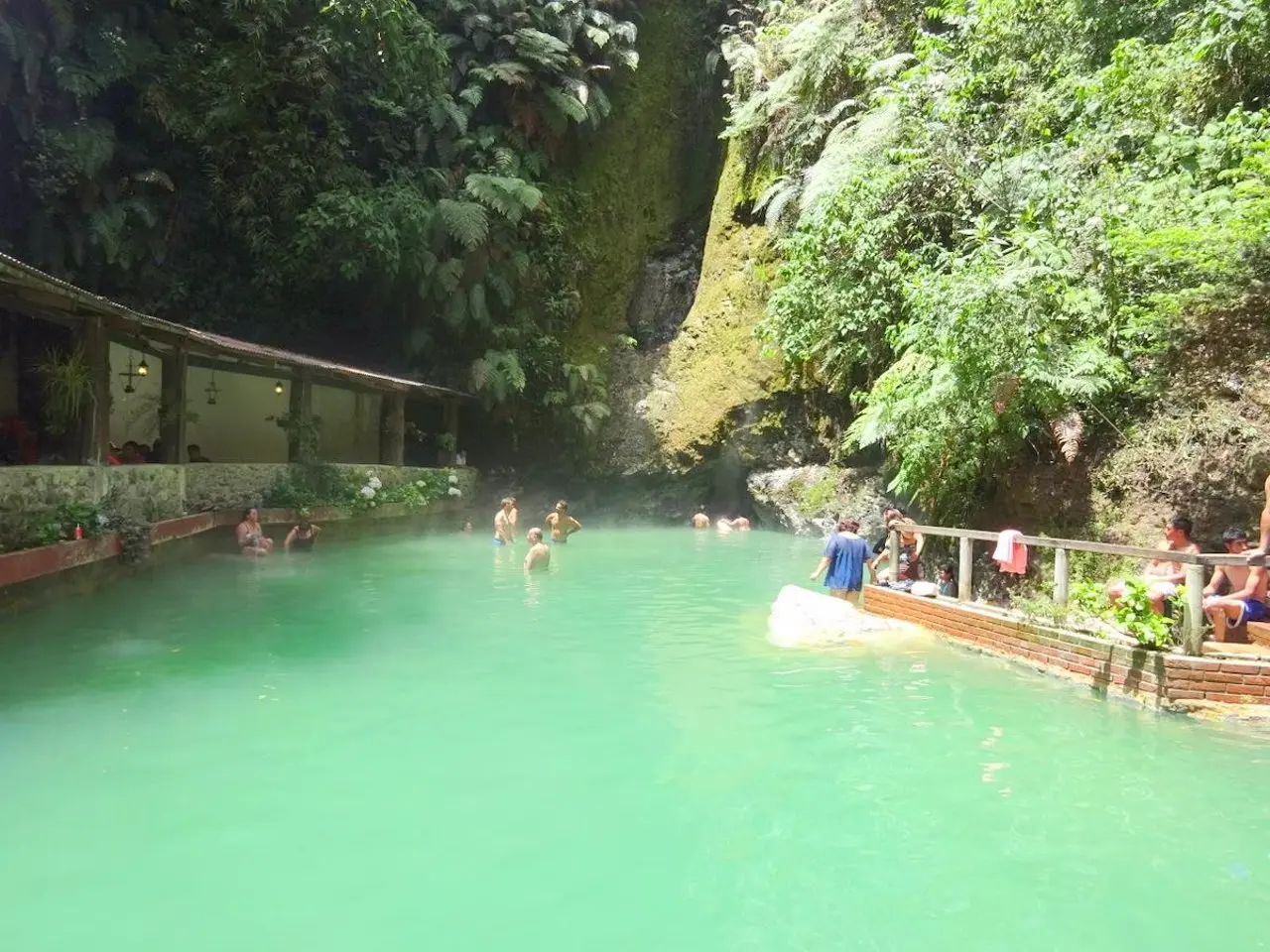
Zunil and Xela
One cannot talk about Zunil without mentioning the shrine of San Simón or Maximón. This folk saint, revered in various forms throughout the highlands, represents a syncretism of pre-Columbian beliefs and Catholicism. The shrine attracts both locals and tourists, who come to offer cigarettes, liquor, and prayers in exchange for blessings and protection. The presence of Maximón in Zunil is a vivid testament to the enduring strength and adaptability of Mayan religious practices.
Just a short drive from Zunil is Quetzaltenango, commonly known as Xela, which is the second-largest city in Guatemala and serves as a cultural hub for the region. Xela is renowned for its own contributions to the cultural tapestry of the highlands, including its language schools, vibrant music scene, and historical architecture. The city is an excellent base for exploring the surrounding areas and immersing oneself in the local culture.
Xela’s significance is enhanced by its role as an educational center, drawing students from around the world eager to learn Spanish and engage with the Mayan culture. The city’s streets resonate with the sounds of marimba music, and the air is often filled with the scent of street food like tostadas and chuchitos. Additionally, the nearby Fuentes Georginas, thermal hot springs located in a cloud forest, offer a serene escape where visitors can relax in sulfurous waters that are said to have healing properties.
The hot springs around Xela, including those in Fuentes Georginas, are not just a tourist attraction but also a place of communal importance for the locals. These springs are tucked away in lush greenery, providing a natural setting for relaxation and contemplation. The contrast between the cool air of the high altitude and the warmth of the geothermal pools provides a refreshing experience unique to Guatemala’s volcanic landscape.
Lake Amatitlan: Nature and Ruins
Lake Amatitlan, located just a short distance from Guatemala City, offers an appealing mix of natural beauty and historical significance that captures the interest of both nature enthusiasts and history buffs. The lake itself is situated in a volcanic crater, providing dramatic landscapes and a unique ecological environment that is ripe for exploration.
The natural setting of Lake Amatitlan is marked by its lush surroundings, where the rich volcanic soil supports a diverse array of flora and fauna. Visitors can enjoy the serene waters of the lake, which reflect the surrounding hills and volcanoes in their calm surface. The area is ideal for outdoor activities such as kayaking, fishing, and bird watching. The lake is a habitat for many bird species, making it a popular spot for ornithologists and casual bird watchers alike.
The volcanic origins of Lake Amatitlan are not only important for its natural history but also add to the adventure and exploration opportunities. The surrounding terrain, with its trails leading through dense forest and up volcanic slopes, provides excellent hiking opportunities. These paths offer breathtaking views of the lake and its environs, perfect for those looking to immerse themselves in nature and physical activity.
Historically, Lake Amatitlan holds a significant place in the cultural history of the region. The area around the lake was once populated by the Maya civilization, and remnants of this ancient culture can still be found near its shores. Exploring these historical sites allows visitors to step back in time and consider the advanced nature of Mayan society, from their architectural prowess to their astronomical knowledge. The ruins near the lake, though not as grand as those found in more famous locations like Tikal, provide a quiet and introspective look at the daily lives of the Maya.
Additionally, the proximity of Lake Amatitlan to Antigua offers the perfect opportunity for day trips. Visitors staying in Antigua can easily reach the lake, making it a convenient excursion for those looking to explore beyond the colonial city’s cobbled streets and vibrant markets. The drive itself is scenic, showcasing the varied landscapes of Guatemala, from its coffee plantations to the looming volcanoes.
Chichicastenango Market: Textiles and Traditions
Chichicastenango Market, often referred to as “Chichi,” is a burst of color and culture, encapsulating the rich heritage of Guatemala’s Mayan past and its vibrant present. Located less than three hours from Antigua, this market offers a fantastic day trip opportunity for those eager to dive into a sensory-rich environment. Twice a week, the small town of Chichicastenango transforms into one of the world’s most famous markets, attracting both locals and tourists who come to experience its unique offerings.
The market is best known for its traditional textiles, which are not only a feast for the eyes but also a testament to the intricate craftwork of the local K’iche’ Maya people. These textiles are more than just fabric; they are storied tapestries, each woven by hand on traditional backstrap looms. The vibrant colors and patterns represent different elements of Mayan cosmology and daily life, with each design telling its own story. Visitors often find themselves captivated by the variety, from handwoven huipiles (traditional blouses) to colorful table runners and woolen blankets, each piece reflecting the skill and dedication of its maker.
Beyond textiles, Chichicastenango offers an array of local crafts that showcase the artisanal diversity of the region. Carved wooden masks, used in traditional dances and ceremonies, are vividly painted and detailed, reflecting both ancestral stories and contemporary artistic innovations. Pottery, jewelry, and leather goods are also abundant, providing a wide range of options for those looking to take a piece of Guatemalan culture home with them.
The market experience is further enriched by the presence of local food vendors. Visitors can taste traditional dishes such as tostadas, tamales, and atole—a warm drink made from corn. These culinary delights provide a taste of the local cuisine and offer a glimpse into the everyday lives of the people who prepare and enjoy these recipes passed down through generations.
Chichicastenango is also home to the 400-year-old Church of Santo Tomás, situated right next to the market. This historic site is a blend of Catholic and Mayan religious practices, where locals often perform rituals and burn incense on the steps leading up to the church. The coexistence of these two religious traditions within the same space is a profound representation of Guatemala’s syncretic cultural heritage.
In essence, a visit to Chichicastenango Market is more than just a shopping trip; it is an immersive cultural experience that connects visitors with the enduring traditions and vibrant spirit of Guatemala’s indigenous communities. It is a place where every alley and stall offers a new visual and sensory pleasure, inviting one to appreciate the rich tapestry of human creativity and resilience. Whether one is an avid collector of textiles, a lover of traditional crafts, or simply a traveler in search of a profound cultural experience, Chichicastenango offers a memorable journey into the heart of Mayan culture.
Guatemala City: Urban Adventures
Guatemala City, the bustling capital of Guatemala, offers a plethora of urban adventures that captivate both the casual visitor and the seasoned traveler. This vibrant city is a treasure trove of museums, cultural sites, and family-friendly attractions, each providing a unique glimpse into the rich tapestry of history and modernity that defines Central America’s most populous city.
At the heart of Guatemala City’s allure are its museums, which are as diverse as they are informative. The National Museum of Archaeology and Ethnology is a must-visit for anyone interested in the ancient civilizations that once thrived in this region. The museum houses an extensive collection of Mayan artifacts, including intricate ceramics, textiles, and jade jewelry, offering insights into the sophisticated societies that existed long before the arrival of Europeans.
Another cultural gem is the Ixchel Museum of Indigenous Textiles and Clothing. Here, visitors can explore the vibrant world of Guatemalan fabrics and designs, which reflect the rich cultural heritage and artistic expression of the country’s indigenous communities. The museum not only displays traditional clothing but also delves into the techniques, dyes, and materials used, showing the evolution of these textiles through the ages.
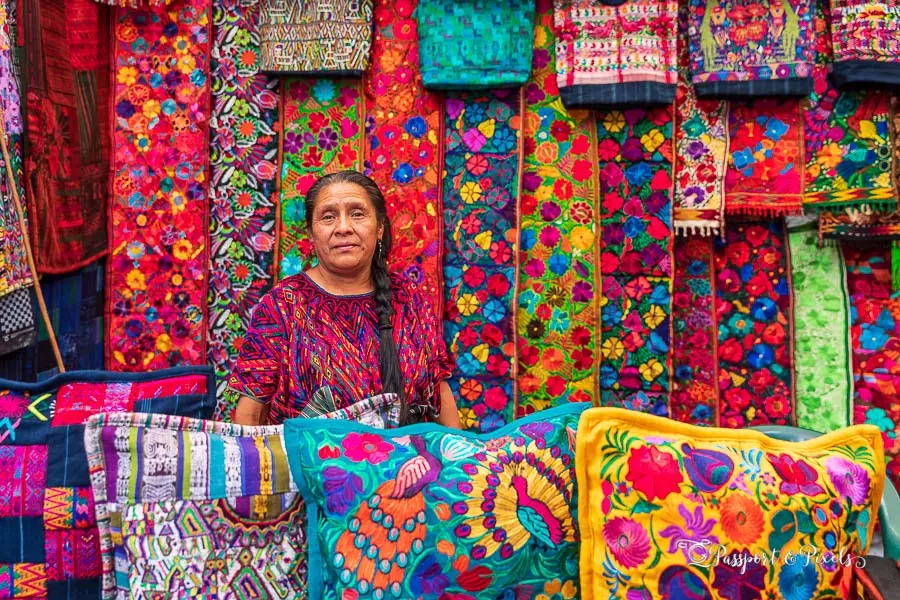
Chichicastenango Market
The city’s cultural scene extends beyond its museums. The historic district of Zone 1 is home to the National Palace of Culture, a stunning architectural marvel that also serves as a cultural center. Guided tours reveal the building’s grandeur and its role in the nation’s history, while various rooms host art exhibitions and cultural performances that reflect the dynamic nature of Guatemala’s artistic communities.
Moreover, a slightly longer trip can take you to Antigua, a UNESCO World Heritage Site known for its well-preserved Spanish colonial architecture and stunning volcanic surroundings. Although not within the city itself, Antigua offers a peaceful retreat with its cobblestone streets, colorful buildings, and the majestic backdrop of volcanoes. This city is a perfect example of Guatemala’s rich history and natural beauty, making it a worthwhile addition to any itinerary.
Guatemala City’s urban environment is a dynamic blend of old and new, where ancient history meets contemporary culture.
San Miguel Duenas: Macadamia Magic
San Miguel Duenas, a small town not far from the historic city of Antigua, Guatemala, is home to a unique attraction that blends agritourism with a touch of wellness: the Valhalla Macadamia Nut Farm. This locale offers visitors a chance to immerse themselves in the world of macadamia cultivation while indulging in spa treatments that highlight the nut’s beneficial properties.
The journey to Valhalla Macadamia Nut Farm is an experience in itself. Located within easy reach for those seeking day trips from Antigua, the farm presents a serene escape into the lush landscapes that characterize this region of Guatemala. Upon arrival, visitors are greeted by the sight of sprawling macadamia trees, the basis of both the farm’s production and its charm.
A tour of the farm reveals the extensive process behind cultivating these prized nuts. Guests learn about the organic farming methods that are employed to grow macadamia trees without the use of chemical pesticides or fertilizers. This approach not only ensures the production of high-quality nuts but also protects the environment, maintaining the natural balance of the area.
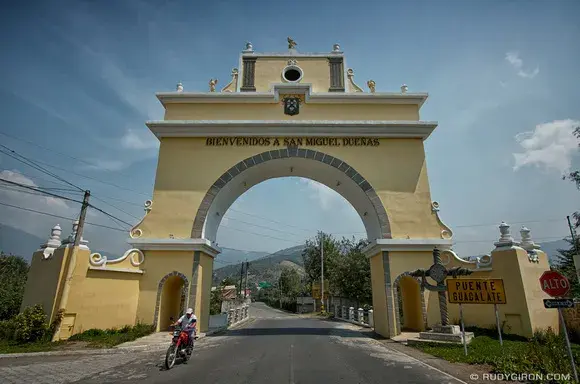
San Miguel Duenas
The educational aspect of the farm is complemented by a taste of freshly harvested macadamia nuts. Visitors can savor these rich, buttery nuts raw, roasted, or as part of various products made on-site, such as macadamia nut oil, butter, and even cookies. Each product offers a different perspective on the versatility of macadamias, turning a simple visit into a culinary exploration.
However, what truly sets Valhalla Macadamia Nut Farm apart are its macadamia oil spa treatments. The farm utilizes the oil extracted from macadamia nuts to provide massages and skin care treatments. Rich in antioxidants and essential fatty acids, macadamia oil is renowned for its moisturizing and rejuvenating properties. Spa guests can enjoy massages that not only relax the body but also nourish the skin, leaving it soft and refreshed.
The farm’s commitment to sustainability extends beyond its organic farming techniques and natural spa treatments. It also plays a role in local community development by providing employment opportunities and supporting education programs that teach local children about environmental conservation and sustainable agriculture.
Visiting Valhalla Macadamia Nut Farm offers more than just a day trip from Antigua; it is an opportunity to engage with the land and its products in a meaningful way. The farm not only showcases the potential of macadamia nuts beyond the kitchen but also promotes a lifestyle that values health, wellness, and environmental responsibility.
As the day winds down, visitors leave with not just memories of a beautiful landscape and delicious tastes, but also a deeper appreciation for the simple yet powerful ways in which a single nut can impact wellness, community, and the environment. The experience at Valhalla is a testament to the magic that can be found in the most unexpected places, making it a must-visit destination for those exploring the riches of Guatemala.
Ciudad Vieja: Echoes of the Old Capital
Ciudad Vieja, the town that once served as Guatemala’s capital, stands as a testament to the country’s rich historical tapestry. A visit to Ciudad Vieja offers a unique glimpse into the past, where the echoes of its former glory are still palpable among the ruins and restored structures. This proximity to Antigua makes it an ideal destination for a day trip, appealing to those looking to delve into the historical context of the region while exploring its cultural heritage.
The history of Ciudad Vieja is marked by tragedy and resilience. Originally established as the second capital of Guatemala, it was devastated by a catastrophic flood from the nearby Volcán de Agua in 1541. This disaster led to the capital being relocated to what is now known as Antigua Guatemala. Today, the remnants of this old capital are sparse but evocative, inviting visitors to wander through the ruins and imagine the city as it once was.

Ciudad Vieja
For travelers, the main attraction in Ciudad Vieja is the palpable sense of history that permeates the town. The streets and architecture speak of the past, with colonial influences visible in the remaining structures. Among these are the ruins of old government buildings and homes that hint at the city’s former importance. These sites are often less crowded than more famous landmarks in nearby Antigua, offering a more contemplative and intimate experience with the past.
Beyond its historical allure, Ciudad Vieja is also known for its vibrant local crafts scene. The town is home to a thriving community of artisans who specialize in traditional Guatemalan crafts. Visitors can explore local workshops and markets where handmade textiles, pottery, and woodwork are sold. These crafts not only provide insight into the artistic heritage of the region but also support the local economy, with artisans using techniques passed down through generations.
The engagement with Ciudad Vieja’s craft culture provides a direct connection to the town’s history and people. Many of the techniques and styles reflect a blend of indigenous and Spanish influences, showcasing the cultural fusion that characterizes much of Guatemalan heritage. Purchasing these crafts can be a meaningful way to remember the visit, with each piece carrying a story of its own.
In planning a visit to Ciudad Vieja, it is advisable to allocate sufficient time to both explore the historic sites and interact with the local artisans. The town may be small, but the depth of history and culture warrants a thorough exploration to truly appreciate what the town has to offer. Moreover, interactions with locals can enrich the experience, providing personal insights into the town’s history and contemporary life.
Jocotenango and Finca La Azotea: Coffee Culture
Jocotenango, a charming town just a short drive from Antigua Guatemala, offers an immersive glimpse into the rich tapestry of coffee culture through the historic Finca La Azotea. This coffee farm is not just a place where coffee beans are cultivated but also serves as a cultural hub where visitors can engage deeply with the entire coffee production process and the heritage associated with this globally cherished beverage.
Finca La Azotea has been a cornerstone in the coffee-producing community for generations, and its roots in the history of coffee cultivation in Guatemala are both deep and enlightening. The farm takes visitors on a journey starting with the planting of coffee seeds to the final product, a cup of aromatic coffee. The experience is educational and interactive, making it a perfect destination for those looking to understand the nuances of coffee growing.
The coffee tour at Finca La Azotea is comprehensive. It begins with a walk through the extensive coffee fields where the coffee cherries are handpicked. The guide explains the importance of each stage of growth and the factors that influence the flavor profile of the coffee, such as altitude, climate, and soil type. This part of the tour not only highlights the agricultural practices but also underscores the environmental consciousness of the farm, showcasing sustainable farming techniques that help preserve the unique ecosystem of the region.
After visiting the fields, the tour continues to the processing area. Here, visitors see first-hand how the harvested coffee cherries are transformed through various stages—depulping, fermenting, washing, and drying—each crucial for defining the coffee’s final taste. The open-air sun-drying patios and the aromatic fermentation tanks provide a sensory experience that is both unique and memorable.
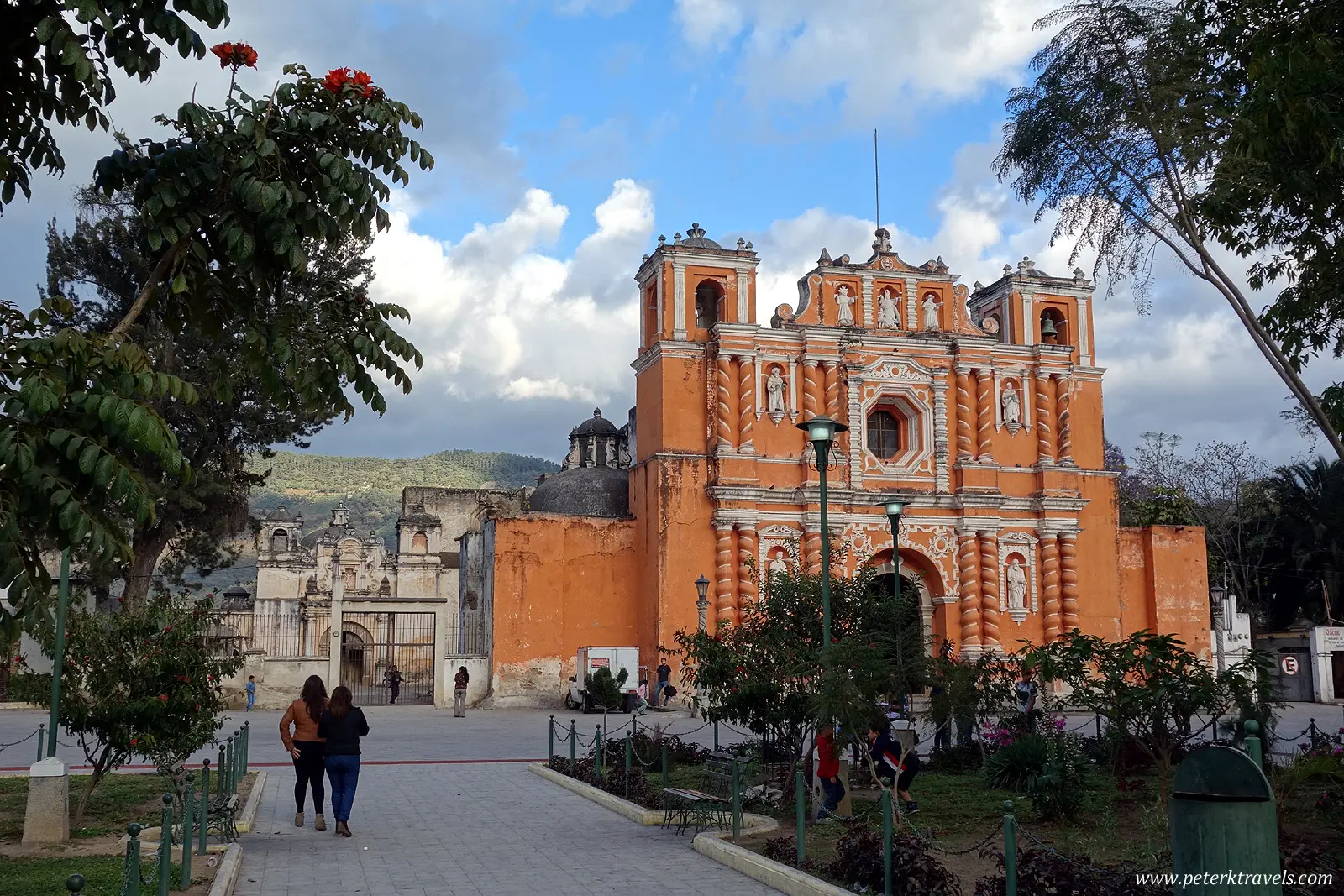
Jocotenango
Another key feature of the tour is the roasting workshop. At this stage, visitors can observe the transformation of the dried coffee beans as they roast, changing color and releasing that quintessential coffee aroma. The roasting process at Finca La Azotea is treated as an art form, carefully timed and adjusted to bring out the desired flavor profiles in the coffee. Guests often have the opportunity to participate in a coffee tasting session following the roast, which helps them appreciate the difference in taste between various roasting levels and bean types.
Beyond coffee production, Finca La Azotea is dedicated to promoting Guatemalan culture. The farm hosts a variety of cultural activities that blend the local traditions with the coffee experience. These include music performances, art exhibitions, and educational programs that discuss the historical and cultural significance of coffee in Guatemala and around the world. Such events provide a holistic view of how coffee is intertwined with local traditions and community life.
The farm also includes a museum dedicated to the history of coffee, offering insights into how the industry has evolved over the years and the role it has played in the economic and social fabric of Central America. The museum houses artifacts, photographs, and interactive displays that tell the story of coffee from its origins to its current status as a global commodity.
Volcano Adventures: Pacaya and Acatenango
Exploring the volcanic landscapes of Guatemala offers an exhilarating blend of adventure and natural beauty, with Pacaya and Acatenango standing out as two of the most iconic and accessible volcanoes for such expeditions. Both volcanoes provide unique experiences, attracting thrill-seekers and nature lovers alike.
Pacaya Volcano, one of the most active volcanoes in Guatemala, promises an awe-inspiring adventure. The hike to its summit is relatively manageable, making it a popular choice for day trips from nearby Antigua. As you ascend the trails, the environment transforms from lush tropical greenery to a more barren, moon-like landscape. The ground near the top becomes warm underfoot, a reminder of the active forces churning just beneath the surface.

Pacaya Volcano
In contrast, Acatenango Volcano offers a more physically demanding journey, which rewards hikers with breathtaking views and a sense of accomplishment. Standing over 3,976 meters tall, it is one of the highest peaks in Central America. The hike typically involves an overnight trek, allowing adventurers to camp near the summit and wake up to one of the most stunning sunrises over the neighboring Volcán de Fuego. Fuego, another highly active volcano, provides a dramatic backdrop, often spewing ash and smoke into the sky, which can be safely viewed from Acatenango’s summit. This juxtaposition of serene beauty and dynamic activity encapsulates the allure of Acatenango.
Both volcanoes are accessible as day trips from Antigua, which serves as an excellent base for these excursions. The proximity of these volcanic adventures to Antigua means that within just a short drive, visitors can transport themselves from cobblestone streets and colonial architecture to the rugged and unpredictable terrain of Guatemala’s volcanic belt. This accessibility makes it feasible to return to the comfort of Antigua after a day of hiking, where one can enjoy the myriad comforts and amenities the town has to offer.
The experiences offered by Pacaya and Acatenango are also indicative of the broader appeal of Guatemala’s volcanic regions. These landscapes are not only physically dramatic but also culturally significant. Local communities respect and revere these mountains, and the guides who lead expeditions often share tales of the folklore and traditions that surround these peaks. This cultural enrichment adds a layer of depth to the hiking experience, connecting visitors not only with nature but also with the heritage of the region.
Safety is a key consideration when embarking on volcanic adventures. Both Pacaya and Acatenango are monitored by geological experts, and tours are led by experienced guides who ensure that safety protocols are followed, especially considering the active nature of these volcanoes. It’s essential for participants to be prepared with appropriate gear and to heed the advice of their guides.
San Cristóbal El Alto: Panoramic Views
San Cristóbal El Alto offers a unique experience for visitors looking for a leisurely day trip from Antigua. This picturesque location is known for its panoramic views that stretch across the landscape, providing a serene backdrop for both relaxation and adventure. The highlight of any visit to San Cristóbal El Alto is undoubtedly the opportunity to dine at Cerro San Cristobal, where the combination of delicious food and breathtaking vistas creates an unforgettable experience.
Cerro San Cristobal is more than just a restaurant; it’s a destination that captivates your senses. As you ascend to the restaurant, the bustling sounds of Antigua gradually fade away, replaced by the soothing whispers of nature. The restaurant itself is strategically positioned to offer the best views of the surrounding valleys and volcanoes. The open-air setting allows diners to enjoy a meal while immersed in the natural beauty of Guatemala.
The menu at Cerro San Cristobal is a reflection of the region’s rich culinary traditions. It features a variety of dishes that are both familiar and innovative, using fresh, locally sourced ingredients. From hearty stews and grilled meats to fresh salads and decadent desserts, there is something to satisfy every palate. The freshness of the ingredients, combined with the skill of the chefs, makes each meal a culinary delight.

San Cristóbal El Alto
Visiting San Cristóbal El Alto also offers a chance to engage with the local culture. The area is home to a number of artisans and craftsmen, and visitors can explore small workshops or markets where they can find handcrafted goods and artworks. These pieces not only serve as unique souvenirs but also help support the local economy and preserve the cultural heritage of the region.
San Cristóbal El Alto is also an ideal spot for photography enthusiasts. The panoramic views provide a dynamic landscape that changes with the light of day. Sunrise and sunset are particularly magical times when the sky is painted with vibrant colors, and the silhouettes of the volcanoes create dramatic backdrops. Photographers, both amateur and professional, will find endless inspiration in the ever-changing scenery.
The journey to San Cristóbal El Alto is an adventure in itself. The road from Antigua winds through small villages and coffee plantations, offering glimpses into the daily lives of the local people. This drive is a reminder of the rich tapestry of history and culture that surrounds Antigua and its neighboring regions.
Exploring Nearby Towns: San Pedro Las Huertas and Ciudad Vieja
Exploring the charm and historical significance of towns like San Pedro Las Huertas and Ciudad Vieja offers a rich tapestry of experiences just a short drive from Antigua. These destinations serve as perfect day trips for those looking to immerse themselves in the vibrant cultural history and picturesque landscapes of Guatemala.
San Pedro Las Huertas, a quaint town, is renowned for its deep cultural roots and traditional ambiance. As you stroll through the cobblestone streets, you are likely to encounter the town’s central feature, the historic church. This architectural gem dates back to the Spanish colonial era and stands as a testament to the town’s enduring spirit. The church’s robust facade and intricate interior are not just a draw for history enthusiasts but also for those appreciating the blend of religious and historical narratives that shape the community.
Beyond the church, the town is alive with the everyday scenes of local life. Markets brim with fresh produce and handcrafted goods, providing a glimpse into the culinary and artistic traditions of the region. The interactions here are warm and welcoming, reflecting a community that values its heritage and the sharing of it with visitors. The serene surroundings, marked by lush greenery and the backdrop of imposing volcanoes, add a natural splendor to the cultural exploration.

San Pedro Las Huertas
A few kilometers away lies Ciudad Vieja, the original capital of Guatemala until a devastating mudslide from the nearby Volcano de Agua prompted its relocation. Today, Ciudad Vieja offers a unique blend of historical significance and natural beauty. The town is home to some of the oldest Spanish colonial architecture in the area, with ruins and restored structures providing a fascinating insight into the early days of Spanish settlement.
Ciudad Vieja’s history is palpable as you wander through its streets. The town square, with its ancient church, serves as a focal point where past and present converge. Here, community events and daily interactions take place against a backdrop of historic walls that echo stories from as far back as the early 16th century. The town not only captivates history buffs but also attracts those intrigued by the tales of survival and rebirth following natural disasters.
Both San Pedro Las Huertas and Ciudad Vieja are accessible via a short and scenic drive from Antigua, making them ideal for day trips. These excursions provide an opportunity to step back in time and experience the authentic charm of Guatemala beyond the well-trodden paths. Each town, with its unique character and history, invites visitors to explore at a leisurely pace, perhaps engaging with locals to hear personal stories that weave into the larger historical tapestry of the region.
For travelers, these visits are not merely about seeing new places but about connecting with the past and understanding the cultural dynamics that have shaped these communities. The blend of scenic beauty, historical architecture, and vibrant local life makes each town a microcosm of the country’s broader heritage and offers an enriching extension to the Antigua experience.
In essence, a visit to San Pedro Las Huertas and Ciudad Vieja provides more than just a glimpse into Guatemala’s colonial past; it offers an immersive journey into the heart of its cultural landscape. These towns encapsulate the enduring allure of Guatemala’s history, community, and natural beauty, making them must-visit destinations for anyone exploring the area around Antigua.
Conclusion: Maximizing Your Day Trips
Day trips offer a delightful escape from the routine, presenting opportunities to explore new destinations and create lasting memories. When planning a day trip from Antigua, the key is to prioritize your itinerary, ensuring that you maximize your time and experience the best of what the surrounding areas have to offer.
First and foremost, the effectiveness of your day trip hinges on your preparation. It’s advisable to decide on your destination in advance and make any necessary bookings, such as for tours or transportation. This can help avoid delays or disappointment due to availability issues, especially during peak tourist seasons. Additionally, checking the weather forecast can help you dress appropriately and pack essentials, enhancing your overall comfort and experience.
One of the most compelling reasons to venture on day trips from Antigua is the rich historical and cultural tapestry that envelops this region. Destinations like the town of Chichicastenango offer vibrant markets and a unique insight into the local traditions and crafts, making them worthwhile visits. Such locations are often just a short journey away and provide a stark contrast to the serene beaches of Antigua, adding a rich layer of diversity to your travel experience.
Transportation planning is also crucial.
Equally important is the art of packing lightly and wisely. For a day trip, all you really need are the essentials: comfortable walking shoes, water, snacks, sun protection, and perhaps a camera to capture the moments. Overpacking can weigh you down and detract from the enjoyment of your adventure. It’s about striking a balance between being well-prepared and mobile.
When considering meals, think about sampling local cuisine at your destination rather than carrying too much food with you. This not only lightens your load but also enriches your cultural experience. Many places near Antigua, such as Lake Atitlán, are known for their distinctive culinary offerings that reflect the local heritage and ingredients. Trying new foods can be a highlight of any day trip, offering both sustenance and a taste of the region’s flavor palette.
Moreover, managing your time efficiently is essential. It’s tempting to pack too many activities into a single day, but this can lead to a rushed experience where you don’t truly get to enjoy any single activity. Prioritize what you want to see and do, and consider how much time each activity will realistically take, including travel time between locations. This planning allows you to immerse fully in each experience without the stress of ticking off a checklist.
Lastly, flexibility can greatly enhance your day trip experience. While it’s important to plan, being open to unexpected discoveries or changes in plans due to weather or other factors can lead to some of the most memorable parts of your trip. Sometimes, it’s these unplanned moments that provide the deepest connection to a place and its people.
In conclusion, maximizing your day trips from Antigua involves thorough preparation, wise packing, strategic planning, and an openness to the spontaneous. Each trip is an opportunity to delve deeper into the rich cultural and historical narratives of the region, bringing back not just photos, but stories and memories that last a lifetime.



